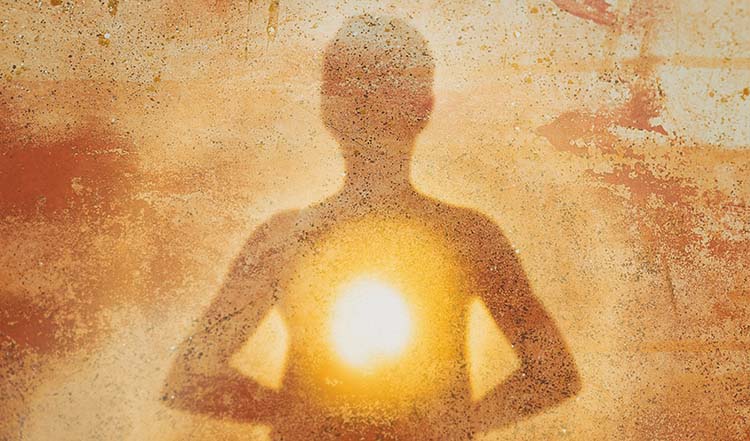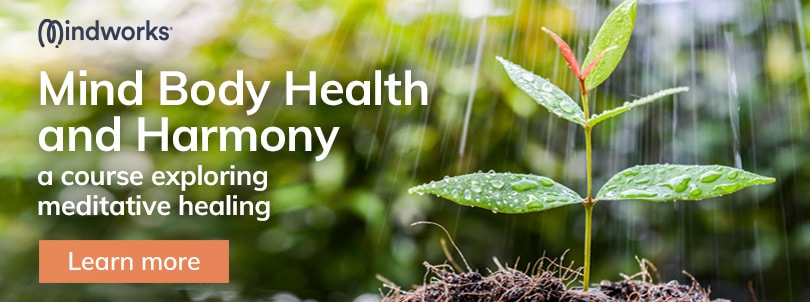Meditation and Physical Pain
Category: Health and Meditation | Meditation and the Brain

Physical Pain vs Suffering (optional!) – What are the key differences?
By using physical pain as an object of meditation we can transform our relationship to pain and in doing so, free ourselves from the suffering it causes. Whether you’re dealing with chronic pain or any bodily pain that arises during meditation, staying present and observing it can offer long-term reprieve.
Pain is any uncomfortable, challenging physical sensation. What makes pain complicated is that it arises as a combination of biological and physical triggers, but is also influenced by environmental and emotional ones. Stress, for example, can lower our threshold for pain.
Our own mind also plays a role in increasing pain’s intensity. It’s often said that while pain is unavoidable, suffering is avoidable. Pain is just part of human life. Suffering, however, arises when we attempt to ignore our pain or push it away, or when we attach to our pain by layering on stories or labels.
Because pain and mind are connected, we can use the mind to alter our experience of pain. Meditation helps us separate our physical pain from suffering by changing how we sense pain, label pain, and react to it.
About Meditation and Chronic Pain
Meditation addresses both the physical and emotional nature of our pain. Healing physical pain through meditation works in the following ways:
- Stress Reduction: Meditation calms the central nervous system to relieve stress. In the absence of stress hormones, muscles relax and inflammation decreases. This softens the physical symptoms of pain.
- Blood Pressure Reduction: There’s a significant correlation between high blood pressure and chronic pain. While researchers are still unsure which comes first, one thing is certain. Meditation helps reduce blood pressure, which eases our perception of pain.
- Joy Production: Mood and pain are connected. Studies support the notion that we feel pain more intensely when we’re in a bad mood. Meditation promotes the release of feel-good endorphins, which act as natural pain relievers. By making us generally happier, meditation offers lasting relief.
- Breath Attention: In meditation, we tend to breathe more steadily and evenly. Breathing in this manner calms the nervous system, while paying attention to the breath shifts awareness away from painful sensations. Shifting focus toward breath in moments of intense pain is a solution that’s always available.
- Perception Shifting: While pain medications address the physical symptoms of pain, they fail to target the psychological and social factors that contribute to our perception of pain. Meditation cuts to the root of our pain by addressing the perceptions that would have us experience sensation as suffering in the first place.
It’s easy to make the mistake of thinking life should be pleasurable all the time, and that if it’s not, something’s wrong. But sometimes, life just hurts. Meditation helps us remain present with this very human truth. In the process, we learn to separate suffering from physical pain.
4 Types of Guided Meditations for Pain Management
When meditating for pain relief, keep an open mind. It’s understandable to hope meditation will completely erase your pain. But meditation is not about fixing pain, but kindly and curiously exploring it. By getting to know our pain, we can reduce its influence over us and regain a sense of agency.
- Body Scan for Pain: In a comfortable position, or lying down, spend time observing each part of the body, from the tips of your toes to the top of your head. With each body part, notice if sensation is present and if so, what it’s like. Observe discomfort with open curiosity. There’s no need to wait for pain to subside before moving on, just continue the scan at a slow and steady pace. Gather information without judgment or expectation.
- Observing Pain: In a comfortable seat, or lying down, focus your attention on the part of your body that’s hurting. As you do, get curious about the details you observe. Is the pain constant, or changing? Does the pain have a temperature, a color, a shape? As you observe the pain, does it move or become less solid?
- Tonglen for Pain: Find the location of pain in your body and imagine it as a cloud of dark smoke. As you breathe in, send a loving, white light toward the center of your pain. As you breathe out, imagine the dark smoke leaving your body. With each cycle of breath, imagine the inhale further filling you with ease as each exhale further dissipates your pain.
- Pleasant, Unpleasant or Neutral? As you complete a body scan, notice sensation or lack of sensation in each body part. Label each sensation as pleasant, unpleasant or neutral. Then ask yourself, are there emotions connected to those labels? Do the labels trigger a certain reaction? It’s that reaction unavoidable, or could you choose something else?
The Limits and Benefits of Meditation for Pain Relief
Meditation may not be the magic pill that completely erases your pain, but for many people, the calming and perspective-transforming effects of meditation are enough. What’s more, you don’t need to be a lifelong meditator for it to work. Studies find even beginners experience the pain reducing effects of meditation after just a few sessions.
What’s more, meditation seems to be longer lasting than other calming, pain management techniques. In one study, those who received a massage felt greater pain relief on the day of their treatment, but those who learned to meditate instead reported less pain 12 weeks later.
To understand more about the mind body connection and how it affects health, check out our online meditation class, led by fabulous doctors and meditation teachers by watching the video below.







